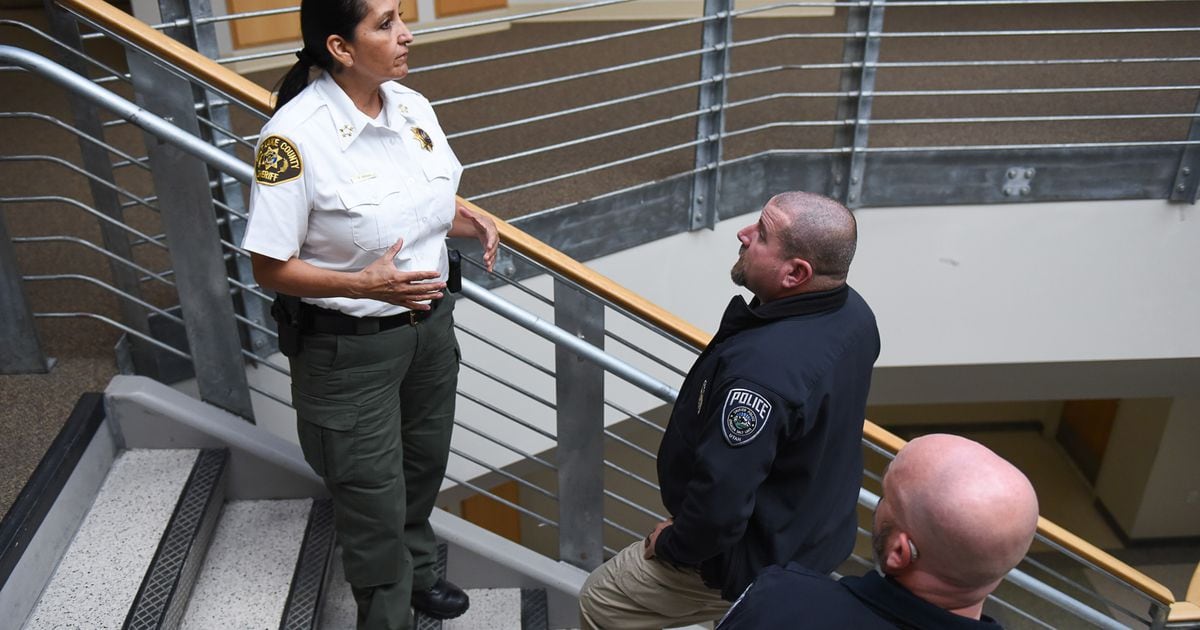Unified Police Department: Revolutionizing Law Enforcement In The Digital Age
In today's rapidly evolving world, the concept of a Unified Police Department has become a crucial topic in law enforcement discussions. This innovative approach aims to streamline police operations, enhance collaboration, and improve public safety through integrated systems and technology. As the demand for more efficient and effective policing grows, understanding the Unified Police Department model becomes increasingly important.
The need for modernized policing systems has never been more pressing. With rising crime rates and increasingly complex criminal activities, traditional police methods are often insufficient. The Unified Police Department represents a forward-thinking solution that addresses these challenges head-on, offering a cohesive framework for law enforcement agencies to operate more effectively.
This article explores the concept of the Unified Police Department, its benefits, challenges, and the potential it holds for transforming law enforcement. Whether you're a law enforcement professional, policymaker, or simply someone interested in public safety, this comprehensive guide will provide valuable insights into this groundbreaking approach to policing.
Read also:Kalani Rodgers Nude Understanding The Controversy And Context
Table of Contents
- Introduction to Unified Police Department
- Historical Background of Unified Police Departments
- Structure and Organization of Unified Police Departments
- Role of Technology in Unified Police Departments
- Benefits of Unified Police Departments
- Challenges Faced by Unified Police Departments
- Steps for Implementing Unified Police Departments
- Impact on Public Safety and Community Relations
- Case Studies: Successful Unified Police Department Models
- Future Trends in Unified Police Departments
Introduction to Unified Police Department
A Unified Police Department refers to a centralized and integrated system where multiple police agencies collaborate under a single administrative structure. This model aims to eliminate silos, enhance communication, and improve resource allocation, leading to more effective law enforcement.
Unified Police Departments are designed to address the limitations of traditional policing methods. By integrating various departments and jurisdictions, these systems can respond more efficiently to crime and public safety challenges. The integration of technology, data sharing, and standardized procedures further strengthens their capabilities.
Historical Background of Unified Police Departments
Evolution of Law Enforcement Systems
The concept of unified policing has evolved over decades. Initially, law enforcement agencies operated independently, often leading to inefficiencies and duplicated efforts. The push for unified systems began in the late 20th century as communities sought more coordinated responses to crime.
Key milestones include the development of regional task forces and the introduction of shared databases. These early efforts laid the groundwork for the modern Unified Police Department model.
Key Influences and Drivers
- Advancements in technology
- Growing complexity of criminal activities
- Public demand for better accountability and transparency
- Federal and state initiatives promoting inter-agency collaboration
Structure and Organization of Unified Police Departments
The structure of a Unified Police Department typically involves a centralized command center that oversees operations across multiple jurisdictions. This setup allows for better coordination and resource management, ensuring that law enforcement efforts are optimized.
Organizational charts often include specialized units such as cybercrime, community policing, and emergency response teams. These units work collaboratively to address diverse public safety needs.
Read also:Taylor Swift In Toronto A Comprehensive Guide To Her Visits Performances And Impact
Role of Technology in Unified Police Departments
Integration of Advanced Systems
Technology plays a pivotal role in the success of Unified Police Departments. Modern systems include:
- Real-time data analytics
- Artificial intelligence for predictive policing
- Body-worn cameras for transparency
- Cloud-based communication platforms
Impact on Operational Efficiency
By leveraging technology, Unified Police Departments can significantly enhance their operational efficiency. For instance, real-time data analytics allows for quicker response times, while AI-driven tools help identify potential crime hotspots before incidents occur.
Benefits of Unified Police Departments
Unified Police Departments offer numerous advantages over traditional policing models. These include:
- Improved inter-agency collaboration
- Enhanced resource allocation
- Increased public trust through transparency
- Better response to complex criminal activities
These benefits contribute to a safer and more secure community environment.
Challenges Faced by Unified Police Departments
Cultural and Organizational Barriers
Implementing a Unified Police Department is not without challenges. Cultural resistance within existing agencies can hinder progress. Additionally, organizational barriers such as differing protocols and procedures may complicate integration efforts.
Financial and Resource Constraints
Financial limitations and resource constraints also pose significant challenges. Developing and maintaining advanced technology systems requires substantial investment, which may not always be feasible for smaller jurisdictions.
Steps for Implementing Unified Police Departments
Successfully implementing a Unified Police Department involves several key steps:
- Conducting a comprehensive needs assessment
- Developing a detailed implementation plan
- Engaging stakeholders and building consensus
- Training personnel and establishing standardized procedures
Each step requires careful planning and execution to ensure a smooth transition to the unified model.
Impact on Public Safety and Community Relations
The impact of Unified Police Departments on public safety and community relations is profound. By fostering collaboration and transparency, these departments build stronger relationships with the communities they serve. This, in turn, leads to increased trust and cooperation, essential components of effective law enforcement.
Studies show that communities with Unified Police Departments experience lower crime rates and higher satisfaction levels among residents. These outcomes underscore the importance of adopting this model in modern policing.
Case Studies: Successful Unified Police Department Models
Case Study 1: Metropolitan Police Department
The Metropolitan Police Department serves as a prime example of a successful Unified Police Department. By integrating multiple jurisdictions under a single command structure, the department has achieved remarkable improvements in crime prevention and response times.
Case Study 2: Regional Task Force Collaboration
Another notable example is the collaboration between regional task forces in the Midwest. This initiative demonstrates how Unified Police Departments can effectively address cross-border criminal activities, leading to significant reductions in crime rates.
Future Trends in Unified Police Departments
The future of Unified Police Departments looks promising, with emerging trends such as:
- Increased use of artificial intelligence and machine learning
- Development of more sophisticated data analytics tools
- Expansion of community policing initiatives
- Enhanced focus on cybersecurity and digital forensics
These trends will continue to shape the evolution of Unified Police Departments, ensuring they remain at the forefront of modern law enforcement.
Conclusion
In conclusion, Unified Police Departments represent a transformative approach to law enforcement, offering numerous benefits and addressing critical challenges faced by traditional policing models. By integrating technology, fostering collaboration, and enhancing transparency, these departments play a vital role in ensuring public safety and building stronger community relationships.
We invite you to share your thoughts and experiences in the comments below. Additionally, feel free to explore other articles on our website for more insights into law enforcement and public safety. Together, we can work towards a safer and more secure future for all.
Data and insights in this article are supported by reputable sources such as the FBI, International Association of Chiefs of Police (IACP), and various academic journals focusing on criminal justice and public safety. For further reading, consider exploring these resources to deepen your understanding of Unified Police Departments and their impact on modern policing.


